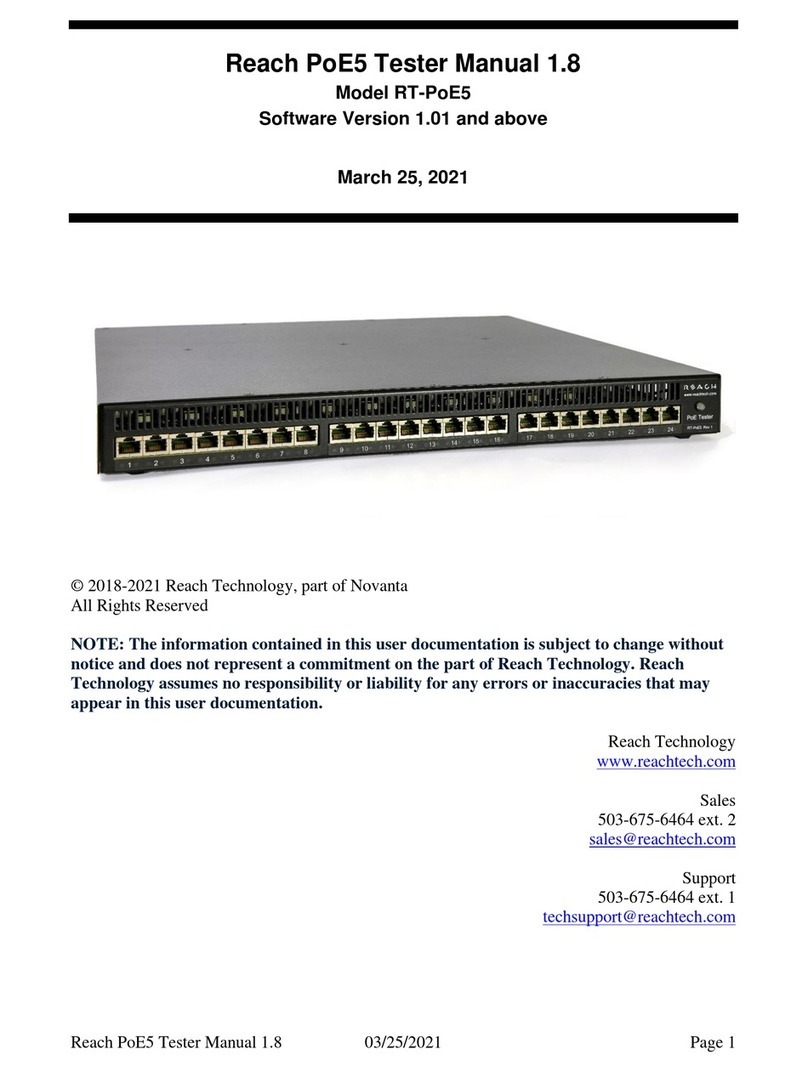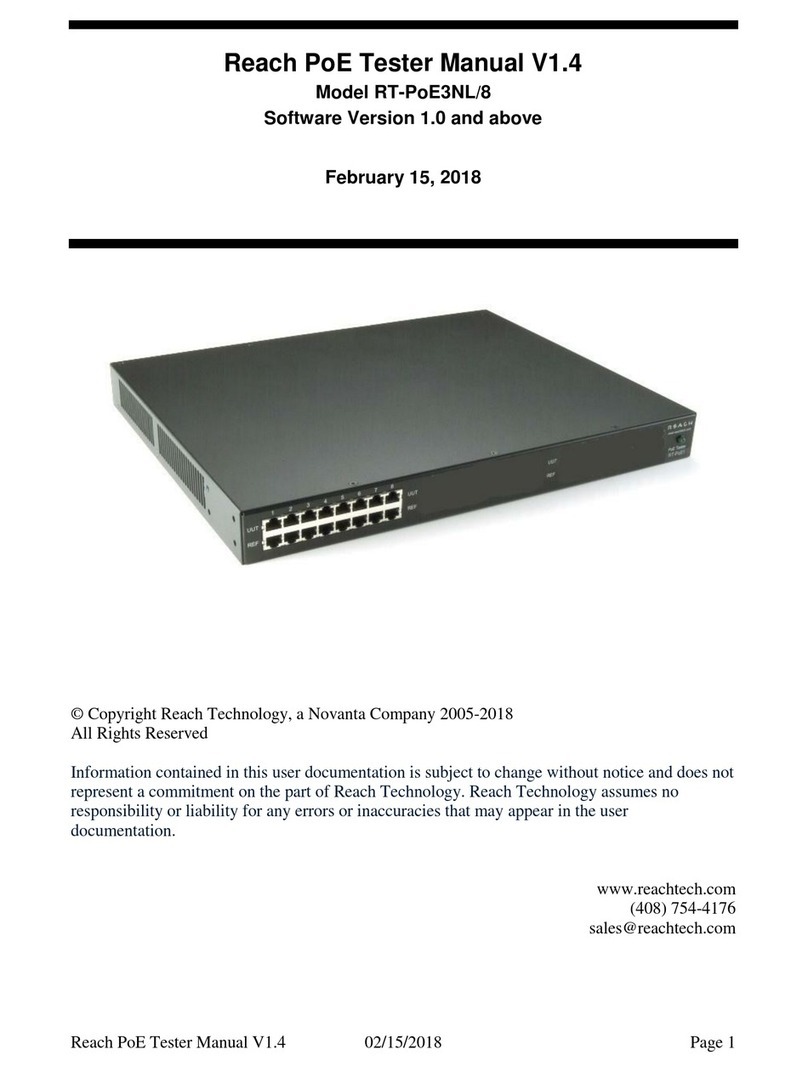
Reach PoE Tester Manual V1.3 04/14/2017 Page 2
Table of Contents
1. REVISION HISTORY........................................................................................................... 4
1.1. RT-POE3N -BASE MODEL ............................................................................................... 4
2. GENERAL.............................................................................................................................. 5
2.1. OVERVIEW......................................................................................................................... 5
2.2. FRONT PANEL.................................................................................................................... 5
2.3. FEATURES.......................................................................................................................... 6
2.4. DIMENSIONS...................................................................................................................... 6
2.5. ELECTRICAL CHARACTERISTICS....................................................................................... 6
2.6. WARRANTY....................................................................................................................... 6
3. CONFIGURATION GUIDE................................................................................................. 7
3.1. POWER............................................................................................................................... 7
3.2. SERIAL CONSOLE .............................................................................................................. 7
3.3. UUT (UNIT UNDER TEST)AND REFERENCE CONNECTIONS ............................................. 7
4. CONNECTORS AND JUMPERS........................................................................................ 9
4.1. RJ-45 ETHERNET CONNECTORS ........................................................................................ 9
4.2. REAR CONNECTORS .......................................................................................................... 9
4.3. INTERNAL ETHERNET POWER JUMPERS.......................................................................... 10
5. OPERATIONAL OVERVIEW .......................................................................................... 11
5.1. DATA PATH...................................................................................................................... 11
5.2. POWER INPUT .................................................................................................................. 11
5.3. SIGNATURE AND LOADS.................................................................................................. 12
6. COMMAND REFERENCE................................................................................................ 13
HELP ......................................................................................................................................... 13
VERSION.................................................................................................................................. 13
ERROR CHECK........................................................................................................................ 14
HOSTNAME............................................................................................................................. 14
BAUD........................................................................................................................................ 14
ECHO ........................................................................................................................................ 15
BOOT ........................................................................................................................................ 15
PORT /GROUP PREFIX .......................................................................................................... 15
AUTO........................................................................................................................................ 16
CAL ........................................................................................................................................... 16
CAP............................................................................................................................................ 16
CLASS....................................................................................................................................... 16
CONNECT ................................................................................................................................ 17
DETECT.................................................................................................................................... 17
EXT............................................................................................................................................ 17
LOAD........................................................................................................................................ 17
MEASURE ................................................................................................................................ 18
RESET....................................................................................................................................... 18
SET............................................................................................................................................ 18
SET MPS ................................................................................................................................... 18
SHORT ...................................................................................................................................... 19
STATUS.................................................................................................................................... 19





























